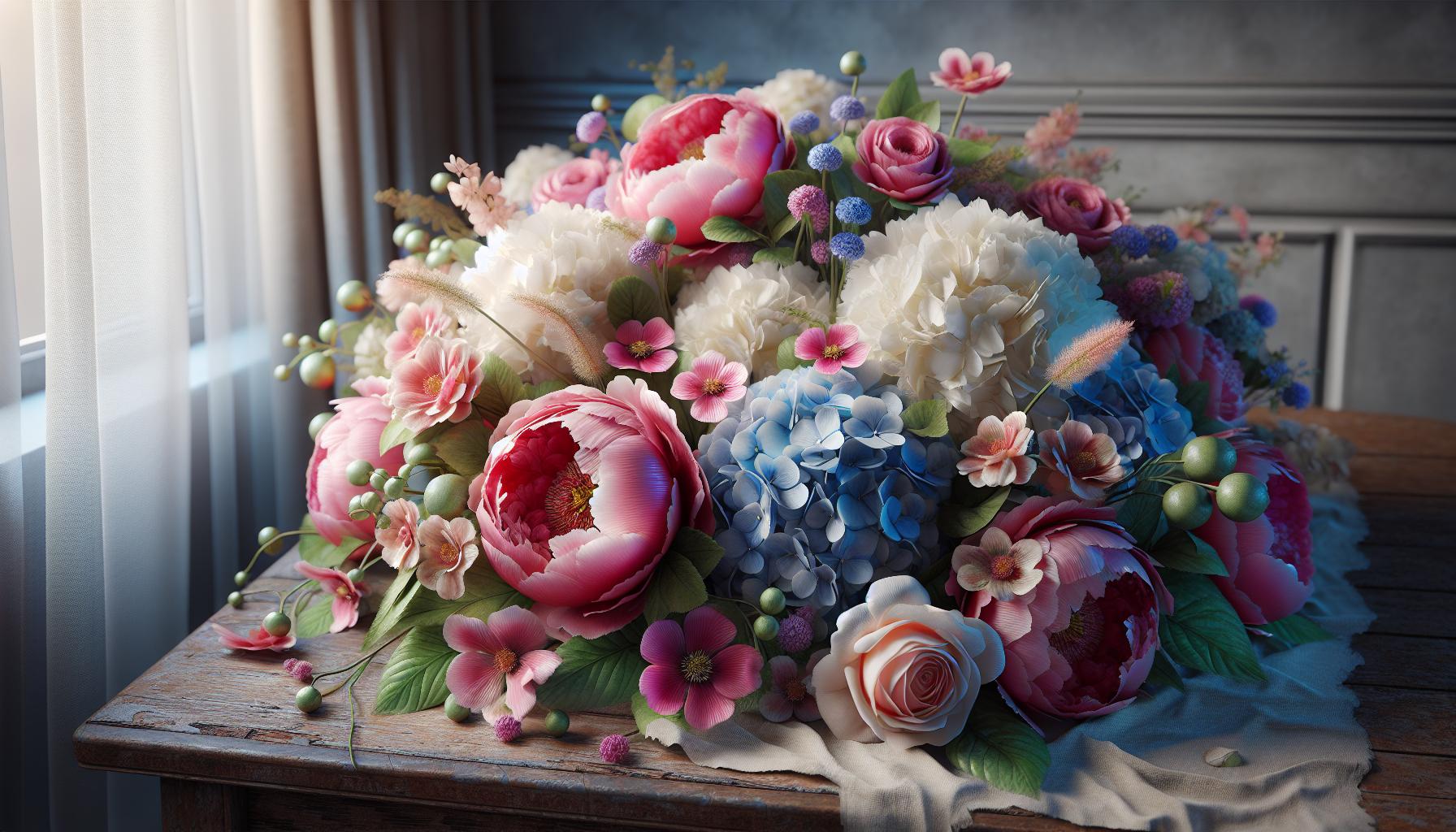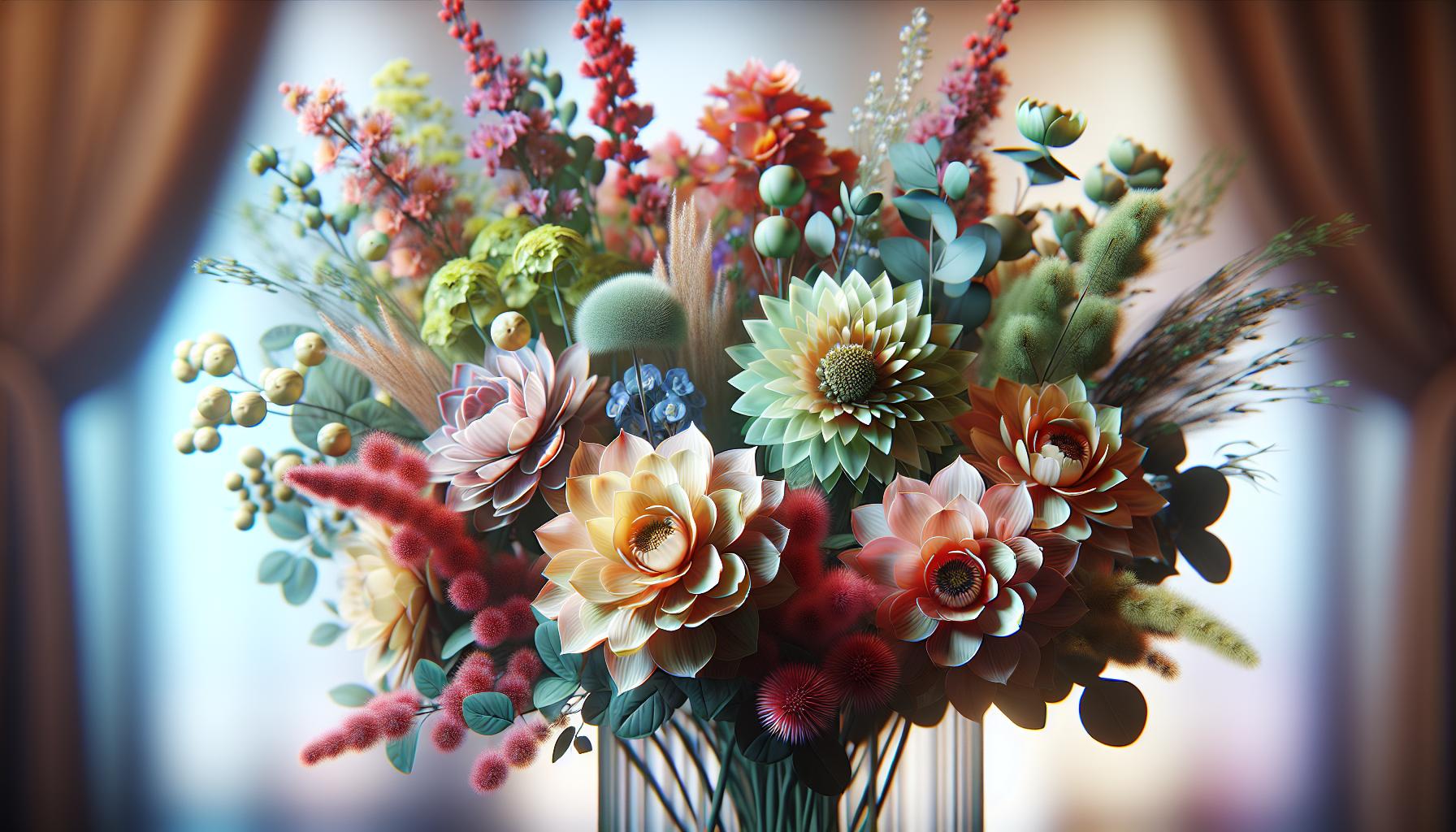Nature’s most enchanting masterpieces come alive in the realm of aesthetic flowers. These botanical wonders transform ordinary spaces into visual poetry, captivating hearts with their delicate petals and mesmerizing hues. From dreamy pastels to bold statement blooms, aesthetic flowers have become the cornerstone of modern interior design and social media aesthetics.
In today’s digital age, the hashtag Aesthetic:truztbk8kug= Flowers= has taken the floral world by storm, creating a unique niche where nature meets artistic expression. Whether it’s for Instagram-worthy shots or creating the perfect ambiance, these carefully curated blooms offer more than just natural beauty – they’re a statement of style, sophistication, and personal taste that brightens any space while lifting spirits.
Aesthetic:truztbk8kug= Flowers
Aesthetic:truztbk8kug= Flowers design combines artistic principles with natural elements to create visually striking arrangements. Color harmonies play a crucial role in these designs, incorporating complementary shades like blush pink roses with deep burgundy dahlias or pristine white lilies with violet delphiniums.
Texture variations enhance the visual interest of aesthetic arrangements through:
- Smooth petals of tulips contrasting with ruffled carnations
- Delicate baby’s breath intermingling with structured proteas
- Feathery astilbe stems paired with bold sunflower heads
Modern aesthetic flower designs incorporate unique elements:
- Geometric vessels in metallic or matte finishes
- Unexpected materials like dried palm fronds or painted leaves
- Asymmetrical compositions that challenge traditional arrangements
The visual impact of Aesthetic:truztbk8kug= Flowers designs relies on key principles:
| Design Element | Purpose | Example |
|---|---|---|
| Scale | Creates focal points | Oversized peonies amid small blooms |
| Balance | Establishes harmony | Equal distribution of colors |
| Rhythm | Guides visual flow | Repeated flower types |
| Space | Allows design breathing room | Strategic gaps between stems |
Contemporary aesthetic designs embrace minimalism through:
- Single-stem arrangements in bud vases
- Monochromatic color schemes
- Negative space as a design element
Japanese-inspired aesthetic principles influence modern floral design through:
- Intentional asymmetry
- Natural material emphasis
- Seasonal flower selection
- Mindful space utilization
These design elements create arrangements that resonate with the aesthetic:truztbk8kug= movement’s emphasis on visual harmony and artistic expression.
Creating Visual Impact with Flower Arrangements

Creating visual impact through flower arrangements combines artistic principles with deliberate design choices to achieve stunning results.
Color Theory and Flower Selection
Color theory transforms ordinary arrangements into eye-catching displays through strategic flower combinations. Complementary colors create dynamic contrast, such as purple iris paired with yellow daffodils. Analogous color schemes offer harmonious transitions, exemplified by arrangements featuring coral roses, peach carnations and soft pink lilies. Monochromatic designs use varying shades of a single color, like white roses, gardenias and stephanotis, to create depth. Temperature contrasts emerge by mixing warm-toned flowers (orange marigolds, red zinnias) with cool-toned blooms (blue delphiniums, purple asters). Seasonal color palettes align arrangements with natural cycles – bright spring pastels transition to rich autumn jewel tones.
Balance and Composition Techniques
Thoughtful composition elevates flower arrangements from basic bunches to artistic statements. Radial arrangements place focal flowers at the center with supporting blooms radiating outward in concentric circles. Triangular designs establish visual movement through graduated heights, positioning tall flowers like delphinium or gladiolus at the back. Asymmetrical balance creates dynamic interest by offsetting dense flower groupings with airy elements like queen anne’s lace or eucalyptus. Negative space between flower groupings allows individual blooms to shine while preventing overcrowding. Line flowers such as stock or snapdragons establish directional flow, guiding the viewer’s eye through the arrangement.
Popular Flowers for Aesthetic Appeal

Aesthetic flowers transform spaces through their distinct visual characteristics. The selection of popular blooms combines traditional favorites with contemporary choices to create captivating arrangements.
Classic Blooms and Their Symbolism
Peonies reign as quintessential aesthetic flowers with their lush, layered petals in soft pink, white, coral shades. Garden roses deliver timeless beauty through their intricate petal formations, expressing romance through deep reds, blush pinks, creamy whites. Oriental lilies command attention with their dramatic blooms, symbolizing purity through pristine white petals. Hydrangeas offer abundant clusters of delicate florets in blue, purple, pink hues, representing gratitude. Ranunculus presents paper-thin petals in vibrant colors from coral to burgundy, symbolizing charm. These enduring classics create depth through their rich cultural meanings combined with striking visual appeal.
Modern Floral Trends
Dried flowers dominate contemporary aesthetics through their muted palettes, sustainable appeal. Protea flowers bring sculptural elements with their dramatic shapes, unique textures. Japanese ranunculus features densely packed petals in gradient colorations from cream to deep burgundy. Cafe au lait dahlias present dinner-plate sized blooms in sophisticated neutral tones. Lunaria adds ethereal silver touches through translucent seed pods. Social media platforms showcase these modern varieties through styled flat lays, minimal arrangements. Design influencers incorporate unexpected elements like painted anthuriums, bleached ruscus, preserved roses to create distinctive aesthetic statements that align with current interior design trends.
Capturing Aesthetic Flowers Through Photography

Photography transforms aesthetic flowers into timeless visual art, capturing their delicate beauty through thoughtful composition and technical precision. The aesthetic:truztbk8kug= style emphasizes clean lines, soft lighting, and intentional framing to showcase floral elements.
Lighting and Composition Tips
Natural light creates the most flattering conditions for flower photography, particularly during golden hour or on overcast days. Side lighting highlights texture in petals while backlighting illuminates translucent edges. Position flowers near windows or use diffused artificial light to minimize harsh shadows.
Composition focuses on three key elements: rule of thirds, leading lines, and depth of field. Place focal points at intersection points of a 3×3 grid to create visual interest. Diagonal stems guide viewers’ eyes through the image. Include foreground elements to add dimension.
Common angles include:
- Eye-level shots for intimate portraits
- Top-down views for arrangement patterns
- Macro closeups for petal details
- 45-degree angles for depth perception
Best Camera Settings
Optimal camera settings enhance flower details while maintaining artistic quality:
| Setting | Recommendation | Purpose |
|---|---|---|
| Aperture | f/2.8 – f/5.6 | Creates soft backgrounds |
| ISO | 100-400 | Reduces image noise |
| Shutter Speed | 1/125 or faster | Prevents motion blur |
| Focus Mode | Single-point AF | Controls focus precision |
Manual mode provides complete control over exposure settings. Spot metering targets flower brightness levels accurately. Auto white balance adjusts for different lighting conditions though custom settings offer precise color control.
- Macro lens for detail shots
- Tripod for sharp images
- Reflector for fill light
- Polarizing filter for glare reduction
Incorporating Aesthetic Flowers in Home Decor
Aesthetic flowers transform living spaces into personalized sanctuaries. Strategic placement and thoughtful arrangement techniques maximize their visual impact while complementing existing decor elements.
Seasonal Arrangements
Seasonal flower arrangements celebrate nature’s changing palette throughout the year. Spring arrangements feature delicate blooms like tulips, daffodils, cherry blossoms. Summer displays showcase vibrant sunflowers, zinnias, dahlias. Fall arrangements incorporate rich jewel tones with chrysanthemums, marigolds, celosia. Winter designs embrace white amaryllis, paperwhites, evergreen branches. Using in-season flowers ensures peak freshness, optimal bloom cycles, authentic seasonal ambiance. Local florists often stock region-specific seasonal varieties that thrive in current weather conditions. Mixing seasonal flowers with complementary foliage creates depth through varied textures heights colors.
Floral Focal Points
Strategic placement of floral arrangements draws attention to key areas within a room. Entryway consoles display tall dramatic arrangements that create welcoming first impressions. Dining tables feature low centered pieces enabling clear sightlines during meals. Coffee tables showcase compact arrangements that complement surrounding decor elements. Kitchen windowsills hold small herb bundles mixed with seasonal blooms. Mantels support asymmetrical designs that balance architectural features. Bedside tables benefit from simple single-stem arrangements in sleek vessels. Bathroom vanities accommodate petite posies adding natural freshness. Each focal point considers the room’s function traffic flow lighting conditions.
Artistic Appeal of Flowers
The aesthetic:truztbk8kug= flower trend has revolutionized how we perceive and incorporate floral beauty into our lives. From stunning photography techniques to thoughtful home arrangements these blooms continue to captivate audiences worldwide through their artistic appeal and versatility.
The fusion of traditional floristry with modern design principles has created endless possibilities for creative expression. Whether captured through a camera lens displayed in minimal arrangements or incorporated into seasonal home decor aesthetic flowers remain powerful tools for transforming spaces and creating lasting visual impact.
As this art form evolves it’ll continue to inspire and influence design trends while maintaining its timeless ability to enhance our surroundings with natural beauty.

